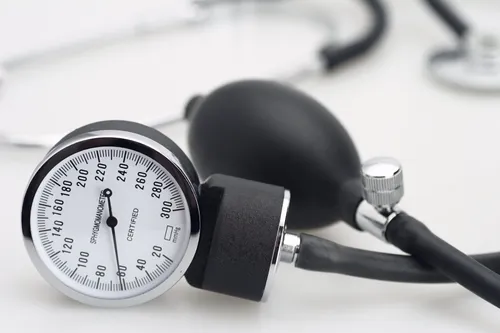Sick for on Again Off Again Vomiting Weakness All Over Can Hardly Walk
Healthcare workers on the frontline are starting to report a agonizing finding when it comes to caring for COVID-19 patients.
Fourth dimension and once again, they are seeing patients who come to the emergency room with "mild symptoms" that can be managed at home; then, 1-2 days after, these patients are dorsum and they're drastically sicker. One ER physician describes it like this: "It's irksome, slow, irksome, and so bang – people are suddenly really sick and crashing. It tin can be actually scary to encounter."
Some patients are describing a similar experience. They may be having mild symptoms like cough, fatigue, and musculus aches for a few days, and then of a sudden experiencing severe shortness of breath, making it almost impossible to fill up their lungs with air.
Doctors are also finding that some patients report that they are starting to feel a little better after most a week, then over the class of 1-ii days, the symptoms come back with a vengeance requiring higher level care in the infirmary – including loftier levels of oxygen and breathing tube placement.
What does the spectrum of COVID-19 disease look similar?
From current data, it looks like about 25-30% of people can exist asymptomatic or "pre-symptomatic" spreading COVID-19 without even knowing that they have it. About 80% of people keep to have mild to moderate illness, and don't become past this stage. But about sixteen% of people do worsen and continue to have more than serious disease.
From what we are seeing in terms of patient'south experiences with COVID-19 it appears that mild symptoms tin feel like a cold: runny nose, cough, sore throat. Balmy-moderate may feel more than like the flu or "walking pneumonia": wiped out for days, deep, dry cough, fever, shortness of breath, taking a few weeks to recover, potentially needing intendance in a hospital. Patients with severe-critical cases experience severe shortness of breath, air hunger, deep cough, needing to be hospitalized, needing oxygen, needing ICU level care, needing ventilator, with a high risk for expiry.
(It's likewise important to remember that the list of possible symptoms has grown beyond fever, cough, and shortness of breath; symptoms may also include: headache, runny nose, sore throat, weakness, fatigue, muscle aches and pains, nausea, tummy upset, vomiting, diarrhea, loss of odour and sense of taste, red optics.)
Who is at higher take a chance of progressing?
The short answer: Nosotros don't know.
It's important to know that we don't yet know who volition have a sudden deterioration. It's happening to people in their 20s-40s and well equally people that are older. It'due south happening to people that take pre-existing health weather, and those that are completely healthy earlier coming down with COVID-19.
Some early trends that we are seeing from the frontlines suggest that almost people with mild illness develop symptoms around day 3- 5, start to prove signs of recovery in about a week, and fully "recover" by about 2 weeks. Some data suggest that people who go on to have more than astringent illness (requiring hospitalization) develop worsening symptoms later day 5 or over the form of the second week, from day seven-10 days.
There is also some data showing that people whose symptoms include severe fatigue, headache, abdominal hurting, and shortness of jiff seem to progress past mild affliction, especially if their age is over sixty and they have other wellness problems (like heart, lung, or kidney affliction, cancer, and depressed allowed systems).
Another finding that suggests you may have more astringent disease is if your breathing rate (the number of breathes in a minute) starts moving up past more 24 breathes/minute when you are resting. If you lot are animate at less than 20 breaths/infinitesimal that seems to exist more reassuring.
Remember, all of these findings are based on early and express information.
What should you practise to protect yourself?
Because we are seeing the possibility of sudden worsening, with no clear risk factors, information technology'due south critically important to monitor your symptoms multiple times a day if you are isolating at domicile. Check your temperature, check your breathing rate, monitor your cough, and monitor for worsening shortness of breath.
If you do accept whatever COVID-19 symptoms (whether you accept tested positive for COVID-nineteen or not), sentry yourself very closely and allow your dr. know quickly if your condition worsens.
Sudden and astringent shortness of breath, deep and uncontrollable coughing, dizziness, and breast discomfort are all signs that you need emergency intendance, so if you lot feel those symptoms, seek care immediately.
- Conditions
-

3 Uncomplicated Changes That Lowered My Mom's Claret Force per unit area
January 28, 2021
My mom was hospitalized three times because her claret pressure was dangerously high. Learn about her "3 signal plan" to aid go on it regulated.
-

iii Daily Habits to Help Reduce Stress
January xv, 2021
It's been a tough few weeks. Everything seems to be happening at in one case. So, how do we stay sane and grounded at this fourth dimension?
-

Ovarian Cancer
We're Under Siege! – Tips for Battling Handling Side Effects
April 22, 2022
When your globe explodes with those horrid words, "It's cancer," you lot're immediately drafted into a war to salve your life. The doctors and nurses begin to hitting ...
-

Blazon 2 Diabetes
How I Manage Piece of work/Stress/Family unit and Type 2 Diabetes
Apr 22, 2022
Living with type 2 diabetes is a work in progress, but it can be done. Stress can be a contributing gene that causes your numbers to become high ....
Source: https://blogs.webmd.com/webmd-doctors/20200402/be-aware-a-mild-case-of-covid19-can-suddenly-turn-severe

0 Response to "Sick for on Again Off Again Vomiting Weakness All Over Can Hardly Walk"
Post a Comment